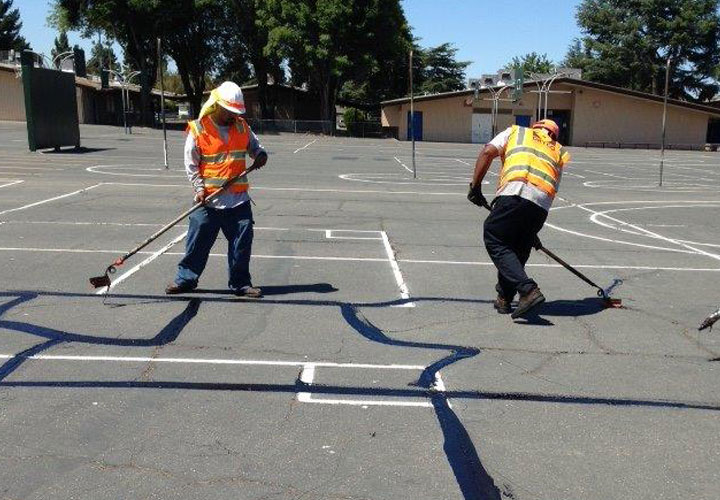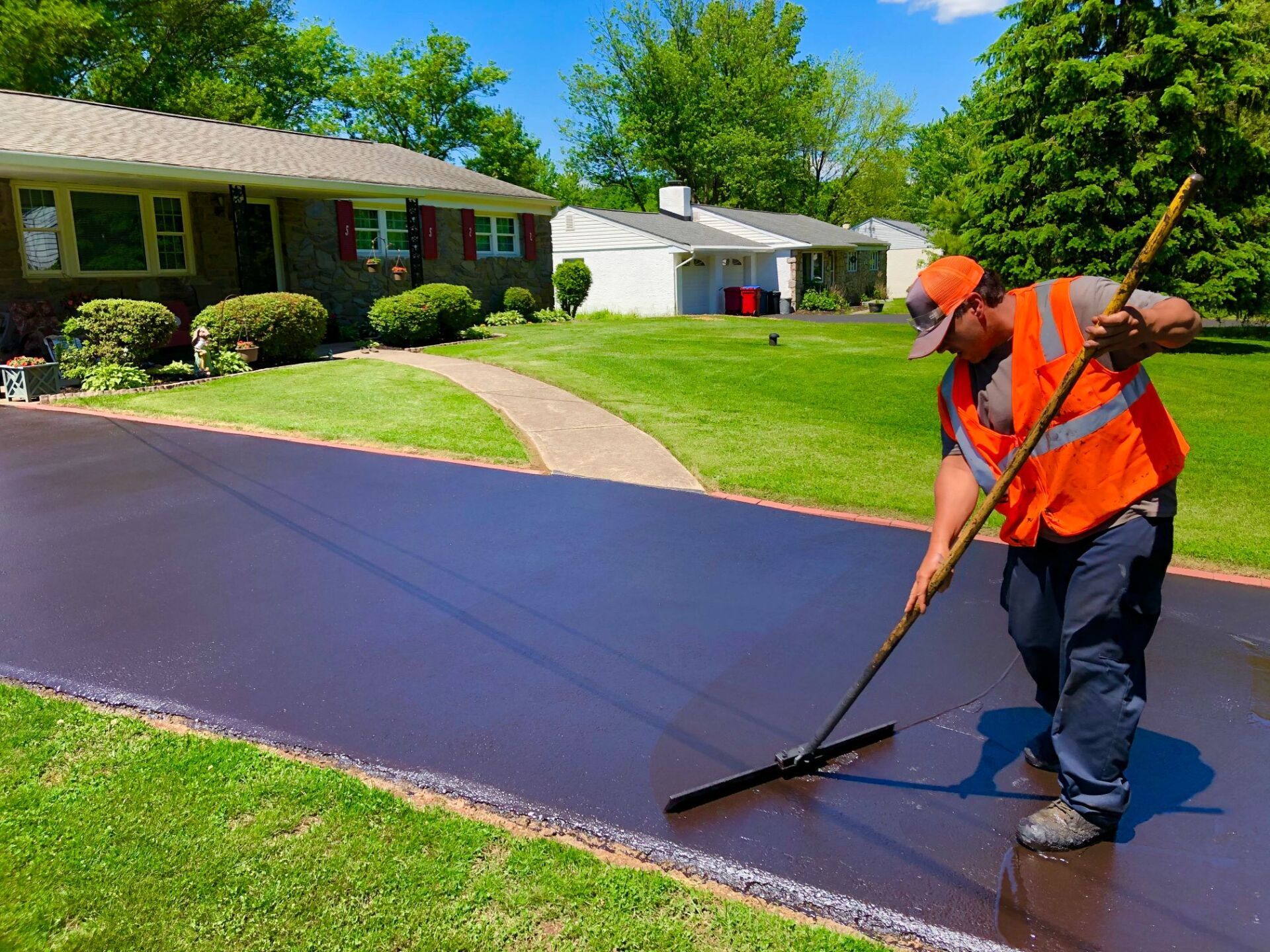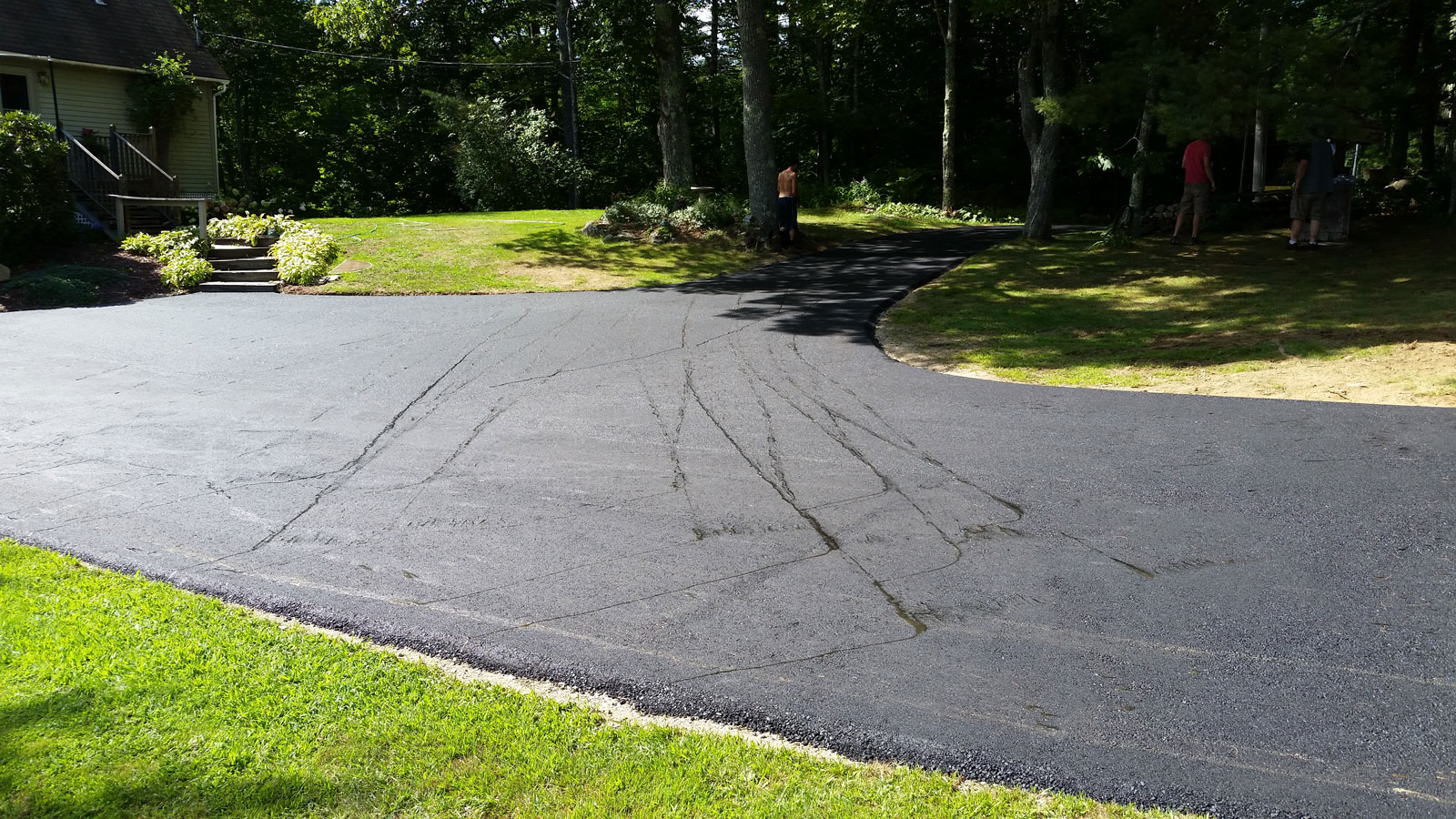Change Your Property's Looks: Commercial Car Park Leading and Asphalt Sealing Solutions
Change Your Property's Looks: Commercial Car Park Leading and Asphalt Sealing Solutions
Blog Article
Hot Mix Asphalt: A Sustainable Service for Pavement
Hot Mix Asphalt (HMA) has become a leading sustainable choice for pavement services, providing a myriad of environmental benefits and innovative technologies. Its capacity to decrease and recycle materials energy consumption offers an engaging situation for its adoption in road construction projects. The long-term performance and longevity of HMA make it a recommended choice for facilities development. As the need for green building practices grows, discovering the nuances of HMA's sustainability can provide beneficial understandings into the future of sidewalk services.
Environmental Advantages of Hot Mix Asphalt

Moreover, Warm Mix Asphalt assists to minimize metropolitan warmth island impacts. Its dark shade takes in sunshine, decreasing the quantity of heat showed back into the environment contrasted to lighter-colored pavements. This can reduce ambient temperature levels in metropolitan locations, decreasing the demand for cooling and ultimately minimizing energy usage.
Additionally, Warm Mix Asphalt adds to boosted stormwater management. Its porous nature enables water to recharge and infiltrate the pavement groundwater supplies, decreasing overflow and the threat of flooding. These ecological advantages make Warm Mix Asphalt a sustainable choice for paving highways and roads.
Energy Efficiency in HMA Production
Is power effectiveness an important element in the production of Warm Mix Asphalt (HMA)? Power plays a considerable role in the manufacturing of HMA, impacting both price and ecological sustainability. One essential facet of power efficiency in HMA manufacturing is the usage of warm mix asphalt (WMA) modern technologies.
In addition, improvements in plant technologies have actually caused more energy-efficient HMA manufacturing processes. Modern plants are made with functions like recycled asphalt sidewalk (RAP) processing capabilities, effective burner systems, and boosted insulation, all contributing to power savings. By maximizing energy use in HMA production, the sector can decrease its carbon impact while maintaining high-quality sidewalk products. Energy performance is, for that reason, a critical consideration in ensuring the sustainability of Hot Mix Asphalt manufacturing.
Recyclability of Warm Mix Asphalt
The recyclability of Warm Mix Asphalt (HMA) is a critical facet of its sustainability and long-term environmental effect. HMA is just one of one of the most recycled materials in the United States, with over 100 million bunches of reclaimed asphalt pavement (RAP) being reused every year in brand-new pavement building. Recycling HMA offers a number of ecological advantages, such as reducing the need for virgin materials, reducing power intake throughout manufacturing, and lowering the quantity of waste sent to landfills.
The process of recycling HMA includes grating the existing sidewalk, squashing it right into smaller sized items, and blending it with brand-new accumulation and asphalt binder to develop a recycled mix. This recycled mix can usually perform as well as and even much better than traditional HMA, while needing less basic materials and creating reduced greenhouse gas exhausts. By integrating RAP right into brand-new sidewalk projects, road agencies can conserve natural sources, reduce prices, and decrease the ecological impact of roadway building and maintenance activities. Overall, the recyclability of HMA plays a significant role in advertising lasting methods within the pavement industry.

Long-Term Efficiency of HMA
Asphalt sidewalks show resilience and durability over a prolonged duration, mirroring the lasting performance of Warm Mix Asphalt (HMA) The longevity of HMA can be attributed to its ability to hold up against rush hour lots, severe climate condition, and the effects of aging. Researches have revealed that well-designed and properly created HMA sidewalks can last for 20 years or even more with normal maintenance. The trick to maximizing the long-term performance of HMA hinges on making use of high-grade products, complying with finest methods in construction, and executing effective upkeep methods. Appropriate drain, routine examinations, and prompt repair services are vital for preserving the architectural honesty of HMA pavements over time. In addition, improvements in HMA innovation, such as using polymer-modified binders and cozy mix asphalt, have further boosted the toughness and longevity of HMA sidewalks. By focusing on quality building and construction and maintenance techniques, HMA proceeds to see here now prove itself as a lasting and affordable solution for long-lasting pavement framework.

HMA: Sturdiness and Sustainability
Demonstrating both longevity and sustainability, Hot Mix Asphalt (HMA) has ended up being a cornerstone in the building and construction of lasting sidewalk facilities - hot mix asphalt. HMA's longevity comes from its capacity to endure hefty tons, harsh climate condition, and high web traffic quantities, making my blog it a reputable selection for streets, freeways, and airport paths. The make-up of HMA, which usually consists of accumulations, binder, and filler, plays an essential duty in enhancing its durability and resistance to put on and tear
Additionally, HMA's sustainability hinges on its recyclability and energy-efficient production process. The capacity to recycle reclaimed asphalt pavement (RAP) in brand-new HMA mixtures decreases the need for virgin products and minimizes the environmental effect of sidewalk building and construction and maintenance. Additionally, the energy performance of generating HMA depends on its lower mixing temperatures contrasted to various other sidewalk products, leading to decreased energy usage and greenhouse gas discharges.
Verdict
In final thought, hot mix asphalt (HMA) offers a lasting option for pavement with its environmentally pleasant attributes. HMA's recyclability, energy efficiency in manufacturing, and long-lasting resilience make it next an environmentally friendly selection for roadway building.
HMA is one of the most recycled materials in the United States, with over 100 million bunches of recovered asphalt pavement (RAP) being recycled yearly in brand-new pavement construction.The procedure of recycling HMA entails milling the existing sidewalk, crushing it right into smaller items, and mixing it with brand-new aggregate and asphalt binder to develop a recycled mix.Asphalt pavements show sturdiness and resilience over a prolonged period, showing the long-term performance of Warm Mix Asphalt (HMA) Furthermore, advancements in HMA innovation, such as the usage of polymer-modified binders and warm mix asphalt, have actually even more boosted the resilience and long life of HMA pavements. The capability to recycle reclaimed asphalt sidewalk (RAP) in brand-new HMA mixes lowers the demand for virgin materials and minimizes the ecological impact of sidewalk building and construction and maintenance.
Report this page